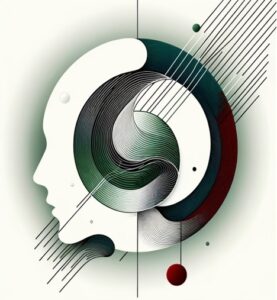Introduction
We cannot heal what we cannot name—and nowhere is this more evident than in the therapy room. In recent decades, the fields of psychology and psychotherapy have increasingly recognized the pivotal role of emotional literacy in mental health and personal development. Emotional literacy—the ability to identify, understand, express, and regulate emotions—is a foundational competence in therapeutic work. Without the capacity to comprehend and communicate one’s emotional landscape, the process of healing, growth, and relational connection is often obstructed.
This article explores the mechanisms through which emotional literacy functions in therapy, its essential role in psychological transformation, and the ways therapists cultivate this capacity in their clients.
What Is Emotional Literacy?
Emotional literacy goes beyond the scope of emotional intelligence. While emotional intelligence tends to emphasize interpersonal skills such as empathy and social awareness, emotional literacy focuses on the intra-psychic domain: the inner experience of emotions and the ability to navigate them with clarity.
It involves naming emotions accurately, discerning their origins, understanding their functions, and selecting constructive forms of expression and regulation. This ability is not innate. It is shaped through early relationships, family dynamics, cultural context, and social modeling.
Individuals raised in emotionally invalidating, chaotic, or emotionally absent environments often enter adulthood—and therapy—with significant gaps in emotional literacy. These gaps may manifest as alexithymia (difficulty identifying and describing feelings), emotional dysregulation, or challenges in forming secure, attuned relationships. For example, a client who grew up being told “you’re too sensitive” may learn to distrust their own emotional responses, arriving in therapy with a limited vocabulary for internal states.
The Role of Emotional Literacy in Therapy
Therapy serves as a structured, relational space in which emotional literacy is both assessed and developed. Across therapeutic modalities—psychodynamic therapy, cognitive-behavioral therapy (CBT), dialectical behavior therapy (DBT), and emotion-focused therapy (EFT)—the ability to identify and articulate emotional experience is central to therapeutic progress.
Naming the Emotion
Many clients enter therapy with somatic complaints, relational conflicts, or general distress, yet lack clarity about the emotional root of their struggles. Therapists help clients learn to identify subtle emotional distinctions—such as differentiating anger from resentment, sadness from shame, or fear from anxiety. These nuances matter. Naming an emotion with precision transforms a vague discomfort into something knowable, and therefore more manageable.
Understanding Emotional Origins
In psychodynamically informed approaches, therapists work with clients to explore the early experiences that shaped their emotional patterns. For instance, a chronic sense of guilt may stem from childhood environments where love was conditional, or self-worth depended on performance. By connecting present emotional reactions to past relational templates, clients begin to understand the architecture of their emotional life.
Expression and Regulation
Emotional literacy also entails knowing how to express emotions safely, effectively, and in alignment with one’s values. Modalities like DBT and EFT teach skills such as mindfulness, distress tolerance, and emotional validation. Therapy becomes a practice ground for emotional expression—a space where clients can test new ways of communicating feelings and receive attuned responses that may have been missing in earlier relationships.
Therapist as Emotional Translator
Therapists often act as emotional translators. They observe affect, body language, metaphor, and narrative gaps to help clients name feelings that are just below conscious awareness. This process—sometimes called mentalizing—allows clients to internalize a model of reflective emotional functioning.
For example, a client who becomes irritable when vulnerable might, through therapeutic reflection, recognize that their anger is a defense against deeper fears of rejection. This awareness fosters self-compassion and allows for more open, less reactive relational patterns to emerge. The therapist’s role in this process is both to mirror and model emotional fluency, giving language to the unspoken and structure to the disorganized.
Cultural Considerations
Emotional literacy does not develop in a vacuum. It is expressed, interpreted, and regulated through cultural frameworks that shape emotional meaning and social acceptability. While core emotions may be universal, their permissible expressions, thresholds for intensity, and linguistic representation vary widely.
In collectivist cultures, for example, emotions that promote group harmony—like deference or shame—may be encouraged, while assertiveness or open anger may be discouraged. In many individualist societies, the reverse often holds true. A therapist trained in a Western framework might misinterpret emotional restraint in a client from an East Asian background as emotional repression, when it may in fact be an adaptive form of emotional intelligence rooted in social cohesion and modesty.
Moreover, some emotional concepts do not translate easily into English. The Portuguese word saudade conveys a deep, melancholic longing; the Japanese amae refers to the tender presumption of another’s care. These culturally specific emotions challenge therapists to move beyond a fixed emotional vocabulary and toward a more flexible, client-centered understanding of affect.
To work effectively across cultural lines, therapists must approach emotional literacy not as a universal skill set, but as a culturally embedded competency. This includes:
-
Curiosity over certainty: Asking clients how they define and experience emotions within their cultural context, rather than assuming a normative template.
-
Language sensitivity: Collaboratively developing emotional language that resonates with the client’s worldview, even if it departs from clinical terminology.
-
Therapeutic humility: Acknowledging one’s own cultural lens, and remaining open to emotional systems that differ from Western paradigms.
A culturally responsive approach to emotional literacy not only prevents misdiagnosis and therapeutic rupture—it affirms the client’s emotional world as valid, coherent, and worthy of respect.
Conclusion
Emotional literacy is not a luxury—it is a psychological necessity. It enables individuals to name suffering, metabolize trauma, navigate relational ruptures, and construct meaning in the face of adversity. In therapy, emotional literacy is both a process and a goal: a process through which clients become attuned to their inner world, and a goal that supports lasting transformation long after therapy ends.
When therapists nurture emotional literacy, they do more than increase self-awareness. They empower clients to develop an emotional vocabulary, promote reflective thinking, and build resilience in the face of emotional overwhelm. Yet for this work to be truly transformative, it must be grounded in cultural sensitivity, linguistic flexibility, and intergenerational context.
In a broader sense, emotional literacy has the power to transform not just individual lives, but collective emotional climates. When families, schools, and institutions support emotional fluency, we reduce mental health stigma, improve communication, and cultivate empathy across lines of identity and experience. We begin to dismantle harmful gender norms, interrupt cycles of emotional silence, and challenge the myth that vulnerability is weakness.
Therapy is not only a site of healing—it is a quiet form of cultural resistance. In helping people reclaim their emotional language, we do more than treat symptoms. We give voice to what was silenced, and in doing so, we change the story.



